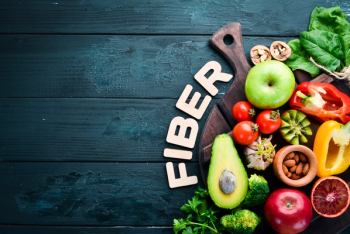
- Nutritional Outlook Vol. 17 No. 6
- Volume 17
- Issue 6
Soft Drinks Responsible for One-Fifth of Stevia Market
Stevia usage is also growing in candy and sports/energy drinks.
Sales still look sweet for stevia as the natural sweetener continues to benefit from consumers’ desire for “naturalness,” as well as expanding regulatory approval. According to Innova Market Insights, food and drink launches featuring stevia rose a further 50% in 2013. Stevia products now account for 1% of all products that Innova Market Insights tracks (including non-sweetener products), up from just 0.6% a year earlier. North America-mainly the United States-is responsible for a dominant 40% of total global launches featuring stevia. Europe is in second place, at 27%.
In terms of product categories, soft drink launches accounted for a leading 22% of global stevia product launches, followed by confectionery launches (10%), specialist sports and energy products (9%), and tabletop sugar and sweetener products (8%). Stevia products are still just a fraction of these products’ overall global markets, however. For instance, in the soft drinks market, stevia products accounted for a relatively modest 3% of total soft drink launches and less than 1% of total confectionery launches. Things look better in the sugar and sweeteners category, however, where stevia products represented a much more significant 15% globally, rising to nearly 30% in the United States and over 33% in Western Europe.
France has seen particular success in the tabletop market. By the end of 2013, stevia sweeteners there commanded 36% of the nutritional sugars market (light sugars and sweeteners), ahead of sucralose and rapidly overtaking aspartame. The market-leading PureVia stevia brand was extended further in 2013 with a novel brown sugar and stevia blend offering 50% fewer calories. The range of stevia sweeteners in Germany also grew with the launch of Sweet Family Stevia GelierZucker, a preserving sugar/stevia blend from Nordzucker.
One of the most interesting developments in 2013 stevia sweetener use was undoubtedly in the soft drinks market, with Coca-Cola’s launch of its first stevia-sweetened cola line, Coca-Cola Life. (Coke and Pepsi have used stevia in drinks for some years, but mainly in fruit drinks.) Launched in Argentina in summer 2013, Coca-Cola Life features a striking green label instead of Coca-Cola’s trademark red palette. Coca-Cola Life is sweetened with sugar and stevia and has 108 calories per 600-ml bottle, positioning its calorie content between Classic Coke (250 calories) and zero-calorie Diet Coke.
Rival Pepsi initially launched its Pepsi Next cola with stevia sweeteners and 30% reduced sugar in Australia only; in other markets, Pepsi Next uses alternative sweeteners. But Pepsi Next with stevia is gradually making its way to other countries, including France in 2013 and Canada, the Netherlands, and Finland in early 2014. Following this trend, Royal Crown Cola also launched a stevia-sweetened cola. Its Neo mid-calorie line with stevia debuted at the Anuga food trade show in October 2013.
Beyond colas, stevia is starring in a range of other prepared foods. In 2013 in Australia, the brand Fountain launched its SmartOptions sauces with stevia, claiming it is the country’s first no-added-sugar tomato and barbecue sauces.
Bakery products are also more widely reformulating with stevia. Recent launches include Primrose Bakery’s sugar-free Lemon & Poppy Seed Bundt Cake in the UK, sweetened with the Natvia brand of stevia. In Germany, the Natreen low-calorie brand introduced two reduced-calorie frozen cakes featuring stevia. These cherry and apple sponge cakes claim to be the first use of steviol glycosides in the frozen bakery market.
Stevia is increasingly blended with other natural sweeteners, including monk fruit (luo han guo) and agave syrup. A number of blended-sweetener products launched in the United States in 2013, including four new Natural Jones Soda lines sweetened with a proprietary blend of cane sugar, organic agave syrup, and stevia; Oogave’s Loca Diet organic carbonates sweetened with agave nectar and stevia; and Be Well Nutrition’s Iconic drinks range, sweetened with a blend of agave, stevia, and monk fruit.
Stevia supply is sometimes an issue, as usage and demand increase. This may necessitate stevia’s use in more blends with other ingredients. Suppliers are also at the ready and are investigating options for utilizing other steviol glycosides apart from the most widely used steviol glycoside, rebaudioside A.
A more mainstream mixed-sweetener introduction came from Chobani, the U.S. yogurt brand that drove the dynamic Greek and Greek-style yogurt market. In late 2013, Chobani introduced its Simply 100 portion-controlled, six-flavor yogurt range featuring 100-calorie products with no artificial sweeteners but rather a blend of monk fruit extract, stevia, and evaporated cane juice. Also in the yogurt market, Andechser, the organic dairy specialist in Germany, launched a sugar-free yogurt line, which actually uses stevia in its name. The Andechser Natur Stevia Bio Joghurt range comes in two flavors: apple and banana/seabuckthorn berry.
Rising concern over the definition and use of the term natural hasn’t stalled consumer attraction to natural products, and stevia benefits from this allure. Also pushing stevia’s growth is ongoing research and development aimed at improving the range and properties of stevia sweeteners available and developing more product-specific solutions to help food and drink companies achieve good-tasting, cost-effective formulations with the required sweetness and calorie levels.
Articles in this issue
over 11 years ago
Equipment for Controlling Food Contaminationover 11 years ago
Four Botanicals to Watchover 11 years ago
Advice for the Next Head of FDA’s Division of Dietary Supplementsover 11 years ago
Protein Products Vulnerable to Amino Acid Spikingover 11 years ago
Coloring with Spirulina Blueover 11 years ago
Biggest Mistake Drug, Supplement Researchers Make: Ignoring Womenover 11 years ago
Fermentation-Derived Stevia Getting Closer to MarketNewsletter
From ingredient science to consumer trends, get the intel you need to stay competitive in the nutrition space—subscribe now to Nutritional Outlook.





